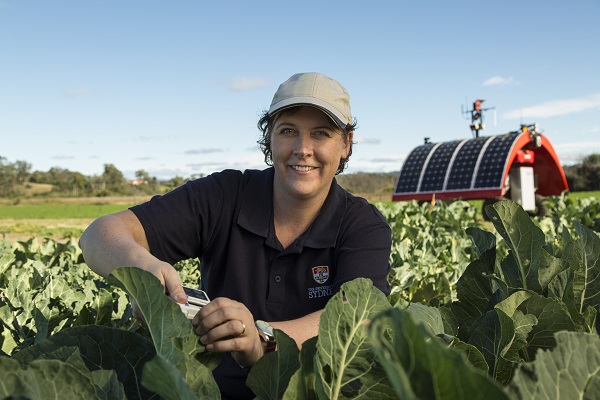Climbing up into the canopy of an old growth forest near the glaciers on the West Coast of New Zealand has been one of the highlights of Margaret Barbour’s career in science.
“I’ve worked in some awesome locations and travelled to some really neat parts of the world,” says Margaret, Associate Professor and Associate Dean (Research), Faculty of Agriculture and Environment and Deputy Director, Centre for Carbon, Water and Food at the University of Sydney.
Margaret says she wanted to become a scientist at the age of eight, when she was inspired by a high school science teacher who took a primary class for a year.
“He showed me how to think scientifically about the way the natural world works,” she says. In the same year, her parents gave her a small microscope as a birthday present. “And, from that point on, I never wanted to be anything except a scientist.”
To reach her current position Margaret completed a three-year undergraduate degree, a two-year master’s degree and a PhD at the Australian National University. This was followed by two short postdoctoral fellowships and a permanent job at a government research organisation. In 2010, she was awarded an ARC Future Fellowship to join the University of Sydney.

In one example, she thought it should be possible to measure the stable oxygen isotope composition of leaf water directly, without having to extract it first, by measuring the isotope composition of carbon dioxide that has exchanged with the water.
In proving this, she has been able to save a great deal of time for researchers, who can now take their measure in a few minutes, rather than a couple of hours, and feed into research used to help farmers improve crop production and save water. “Understanding how the world works is what drives you,” she says.
As a scientist and academic, Margaret spends 40 percent of her time on research and writing papers, 40 percent teaching and helping students, and the rest on administration, such as strategic planning.
“Teaching can be very rewarding when students ‘get’ it. When they are graduating, it’s nearly as rewarding for a teacher as it is for the parents of the students,” she says.
It sounds as though everything fell neatly into place for Margaret, however she needed some maths tutoring to help with calculus in her last year of high school. “I worked really hard to end up with a B,” she says.
Margaret advises aspiring scientists to persist with maths, “even when it gets hard”.
A number of mentors and champions have helped her along the way with advice, introductions and opportunities.
“I’ve also had a long-term informal mentor who is a senior female academic. She’s been fantastic for support and ideas on how to achieve work-life balance,” she says.
Margaret says she has never had any issues as a woman in science, other than being aware of how few female professors there are in STEM (Science, Technology, Engineering and Maths). “Now I’m doing everything I can think of to change that,” she says.
Margaret Barbour was interviewed as part of the Workplace Gender Equality Agency’s women’s work | men’s work project. This initiative breaks down gender stereotypes around work by profiling three women working in STEM and three men working in education and care roles.
Download a free poster of Margaret, as well as a factsheet about her career, at wgea.gov.au